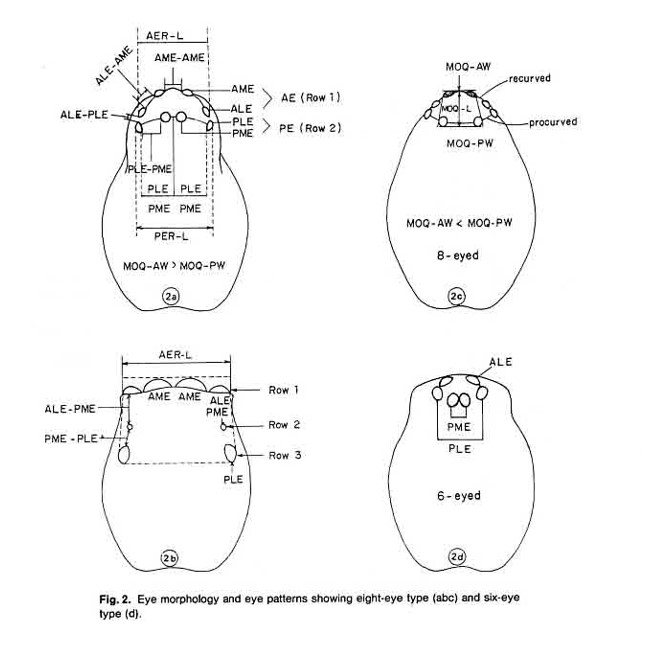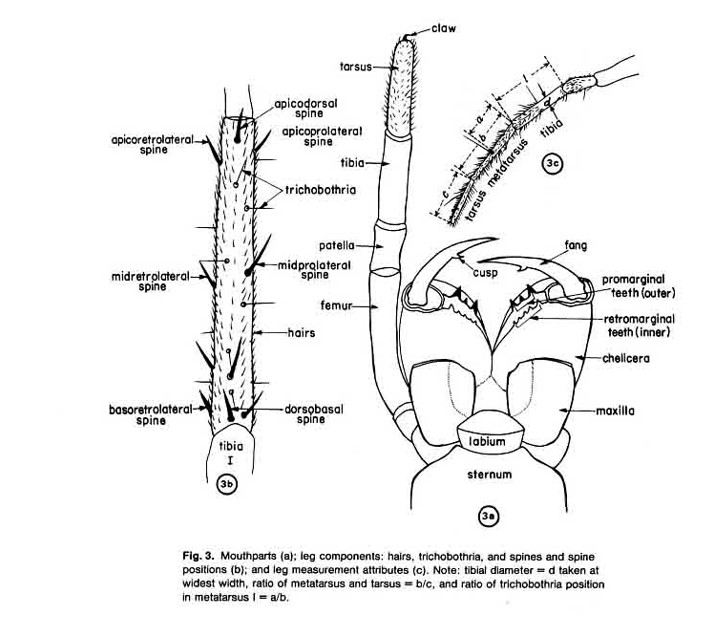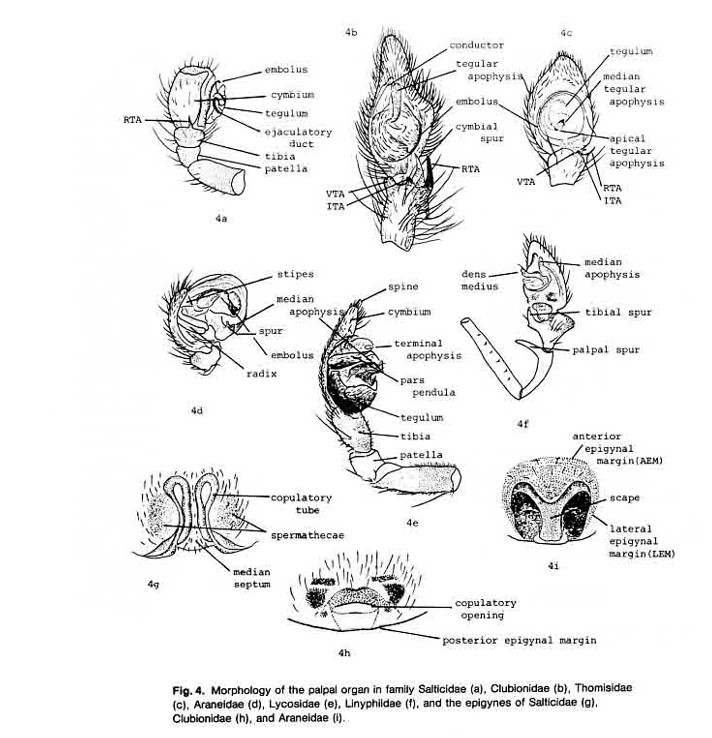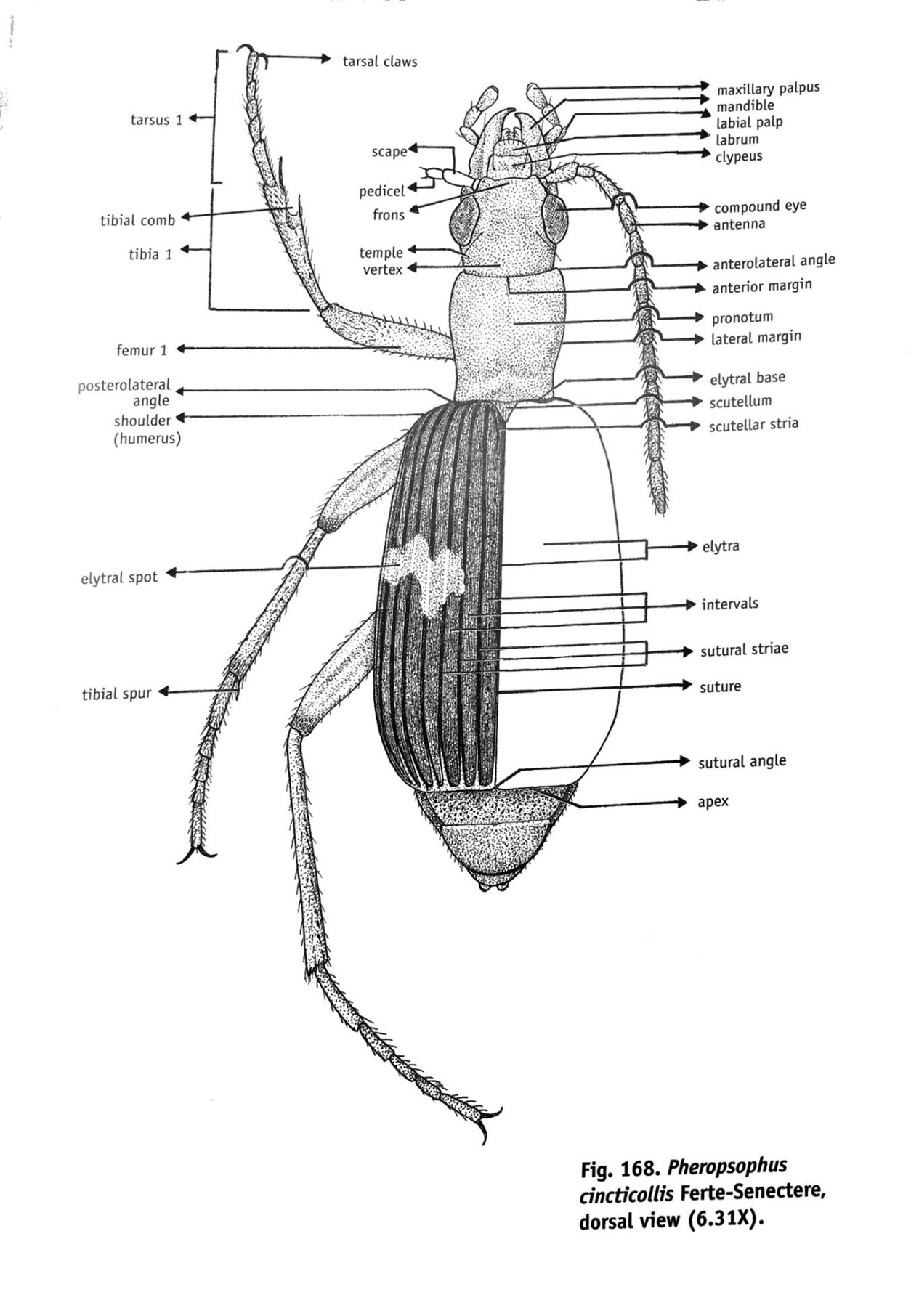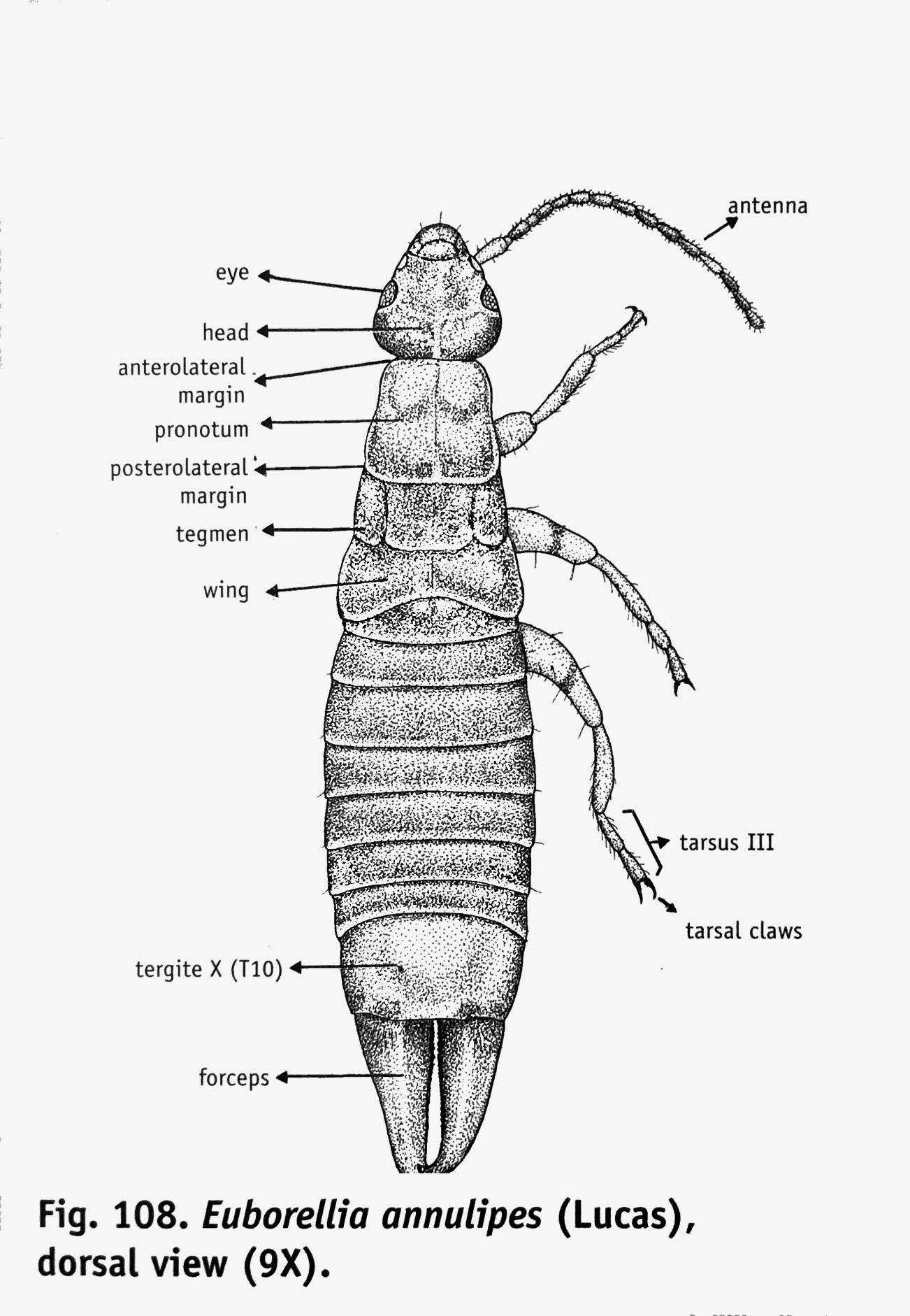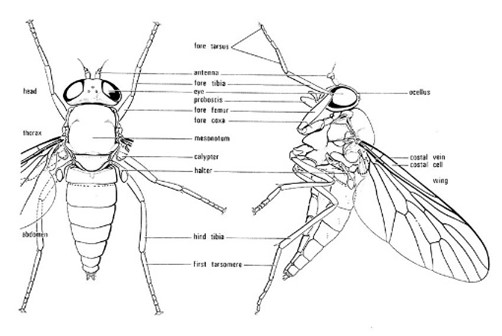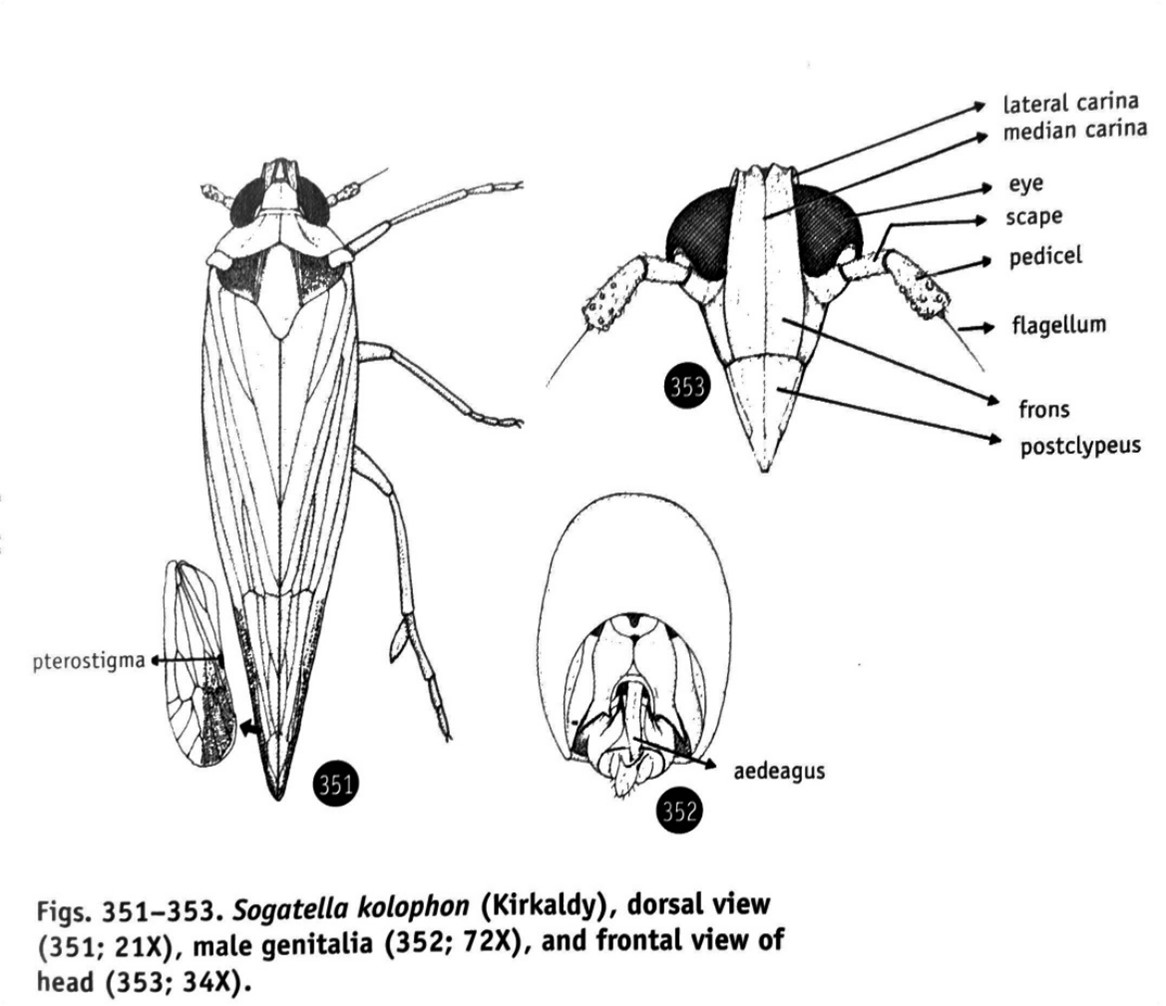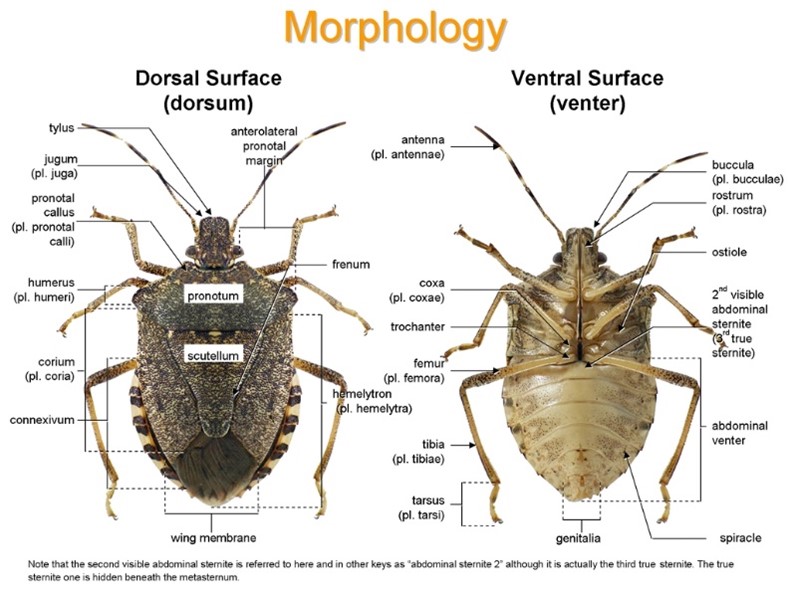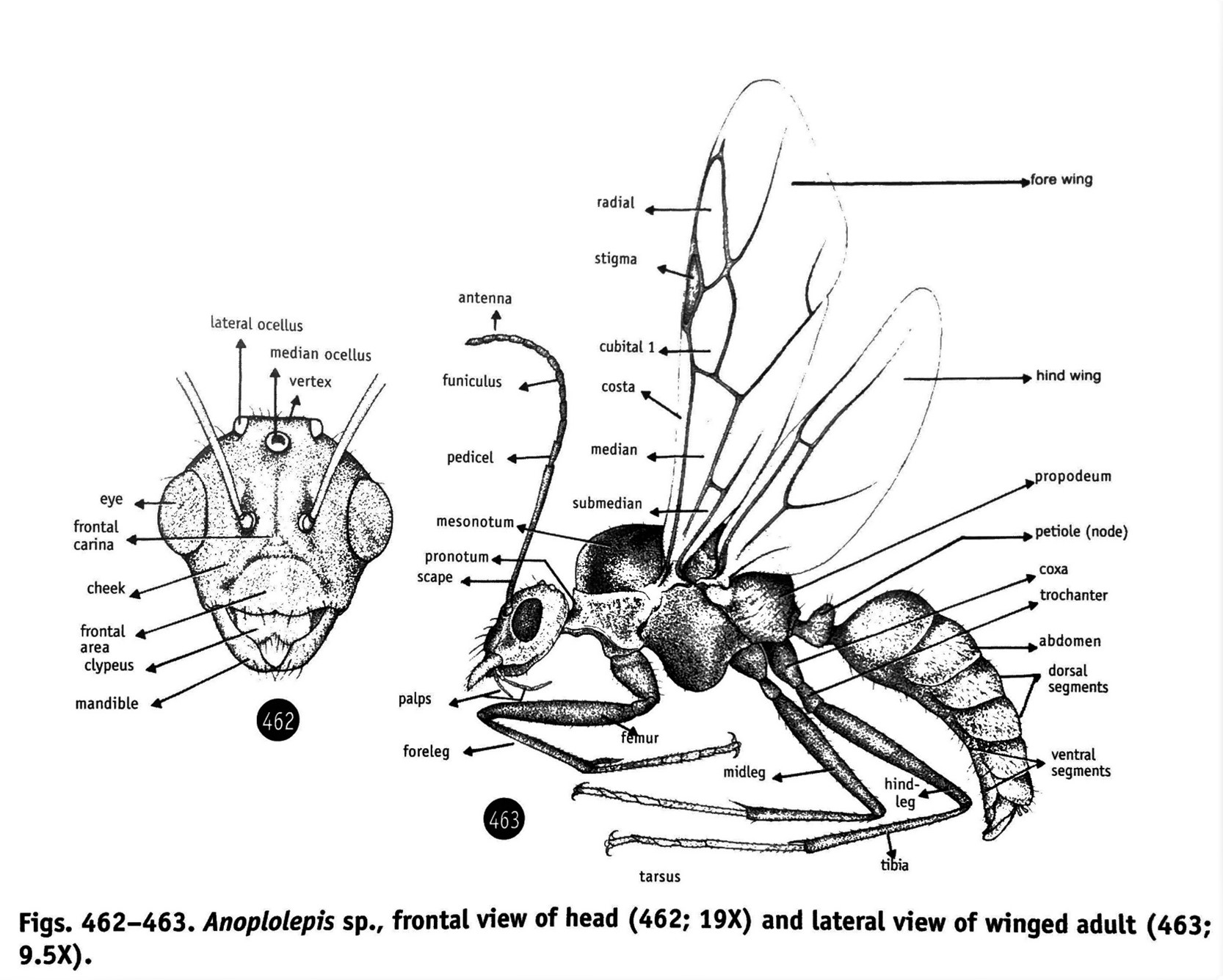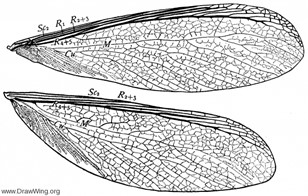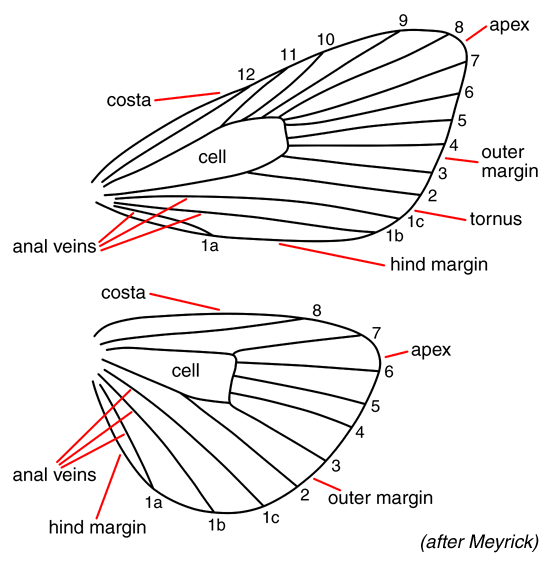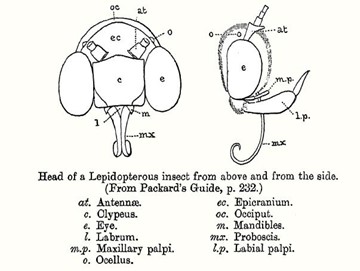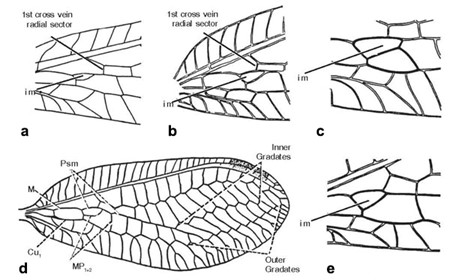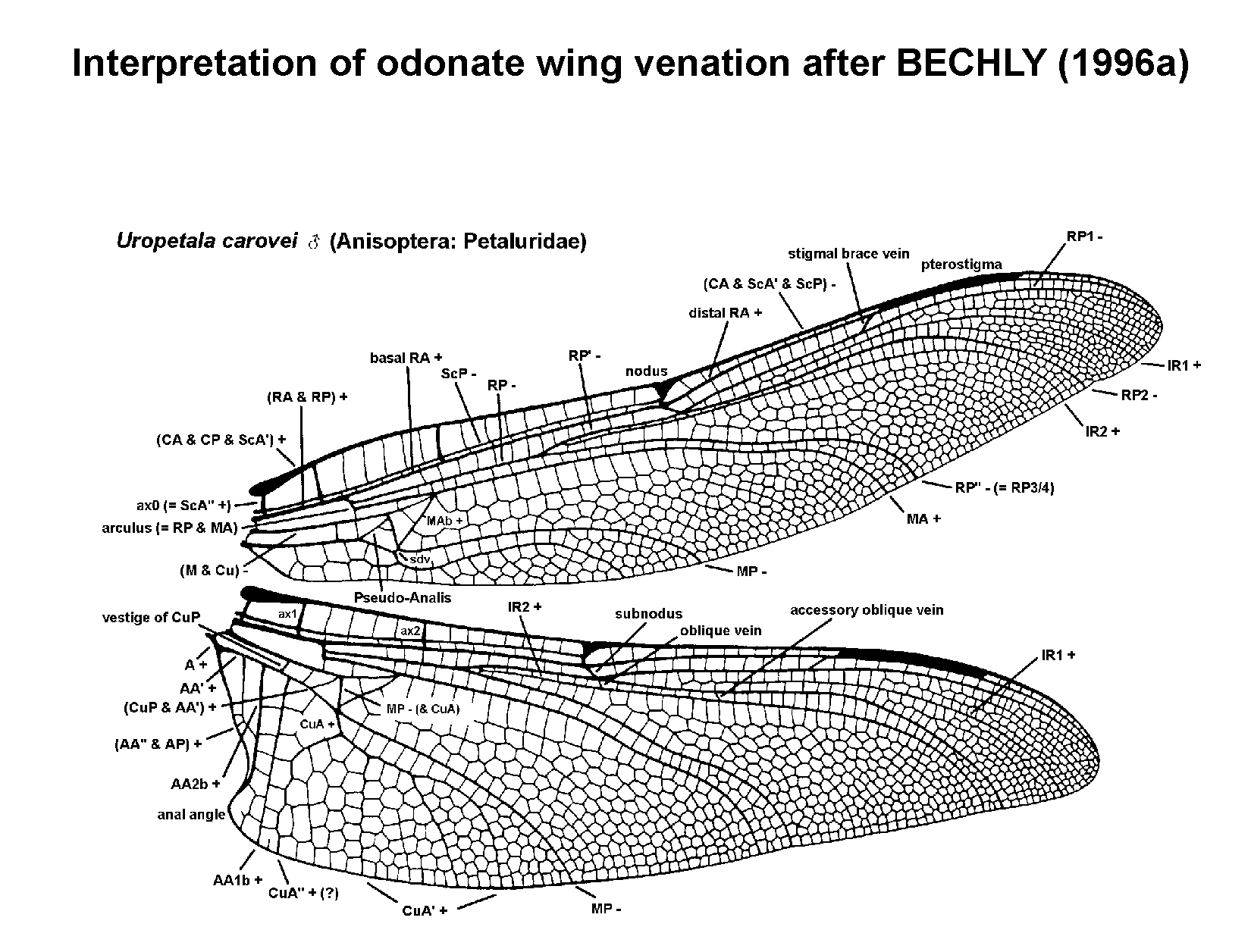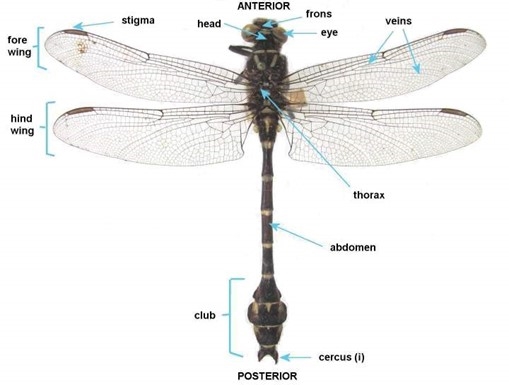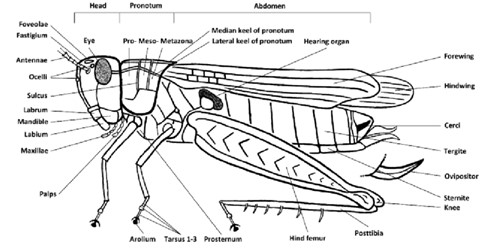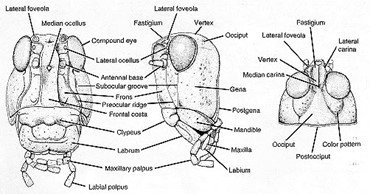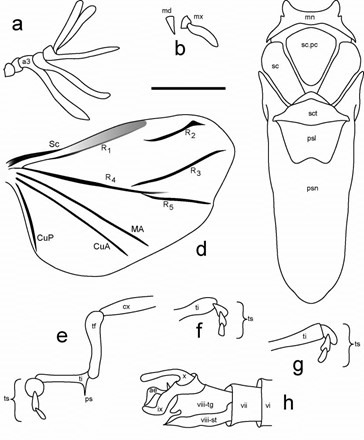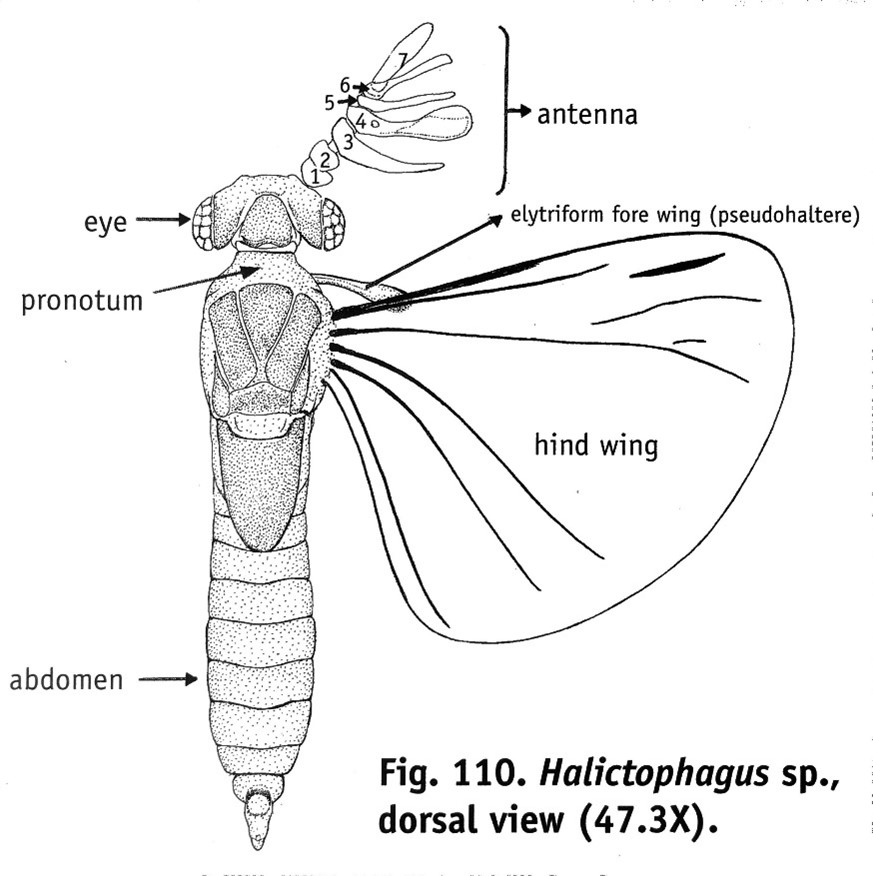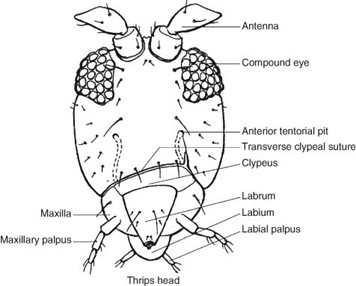Rice Insect Pests and their Arthropod Parasites and Predators
Glossary
Araneae (Spiders)
a small protuberance (tubercule) above the spinnerets through which the anus opens
internal ridges from the exoskeleton that support internal organs, provide points of muscle attachment and constitute the endoskeleton
any tubercular or elongate process of the body wall of an insect, internal or external
boat shaped; a concave disk with elevated margin
the hard covering of the cephalothorax in spiders
pertaining to the anal end of the arthropod body
belonging to or attached to the head; directed toward the head
the head/thorax unit of spiders to which the legs are attached
a description of a chelicera where the fang closes against a tooth-like process
the pinching pincer-like first pair of appendages of adult spiders
clubbed; thickening gradually toward the tip
a dense group of hairs or bristles (setae) underneath the paired tarsal claws, usually well developed in hunting spiders
the area of the carapace between the anterior (frontmost) eyes and the anterior edge of the carapace
a short protuberance in the middle of the underside of the abdomen in front of the spinnerets, considered to be a modification of the cribellum
a part of the palpal bulb that accompanies and supports the embolus
first leg segment, between body and trochanter; the coxa of the pedipalp is heavily modified to form the maxilla or endite
a small spiny outgrowth ("wart") on the endites and labium of Mygalomorph
the end part of the tarsus of the pedipalp in a mature male, usually hollowed out and bearing the palpal bulb
the upper (dorsal) surface of the body or abdomen; the adjective dorsal may be applied to the upper surface of any part of the body
the final part of the palpal bulb containing the end of the sperm duct, usually thin, sharp-tipped and strongly hardened (sclerotized)
a transverse slit towards front of underside of abdomen; the front pair of book lungs open at the edge of this furrow as do the gonopores
hardened plate on underside of female abdomen in which the copulatory openings are located; only fully developed in mature entelegyne spiders
the organs of sight; basic number is eight, typically arranged in two rows; consist of anterior median, posterior median and lateral eyes
final hinged part of the chelicera, normally folded into a groove in the basal part of the chelicera; venom is injected via opening near tip of fang
third leg segment, between trochanter and tibia
a depression or pit in the center of the carapace of a spider marking an inward projection of the exoskeleton to which stomach muscles are attached
the genital opening; located in the epigastric furrow; the opening of the duct from the uterus in females and from the testes in males
smooth, hairless and without punctures or structures
the genital opening; located in the epigastric furrow; the opening of the duct from the uterus in females and from the testes in males
a membranous, inflatable part of the palpal bulb
differing in kind; unlike in quality
similar in structure
a hardened plate (sclerite) between the maxillae at the front of the sternum
a component (the "upper lip") of the mouthparts, concealed by the chelicerae
(applied to appendages), viewed from above or below, the sides of the leg or pedipalp, i.e. the surfaces parallel to the line of sight
with legs directed to the side, hence appearing like and moving like a crab
legs are front (I) to rear (IV); relative length is represented by four numbers, longest to shortest e.g. 1243 = first (leg I) longest and third (leg III) shortest
any prominent rounded process on a margin or structure
one of two anterior median eyes (AME) having light-detecting units (rhabdomeres) pointing towards the source; enlarged in Salticidae and Thomisidae
a projection or bump on the chelicerae (not to be confused with teeth)
modified coxa of the pedipalp, used in feeding; not the structure called by this name in other arthropods
a projection (apophysis) of the palpal bulb, below the conductor
sixth leg segment, between tibia and tarsus; absent in the pedipalp
the copulatory organ of the male spider, carried on the modified last segment of the pedipalp, used to transfer sperm to the female
an outgrowth of the cymbium on the male pedipalp
fourth leg segment, between femur and tibia
the basal segment of a chelicera to which the fang connects
the narrow connection between the cephalothorax and abdomen
the second appendage of the cephalothorax in front of the first leg; bears the palpal bulb in male spiders
used to describe a structure which is curved in such a way that the outer edges are in front of the central part; opposite of recurved
viewed from above or below, the side of a leg or pedipalp nearest the mouth, i.e., the side facing forward; opposite of retrolateral
the side of the cheliceral furrow facing forward; particularly used for describing teeth; opposite of retromarginal
used to describe a structure which is curved in such a way that the outer edges are behind the central part; opposite of procurved
viewed from above or below, the side of a leg or pedipalp furthest from the mouth, i.e., the side facing backwards; opposite prolateral
a backward-facing projection on the tibia of the male pedipalp; distinguishing feature of the RTA clade
the side of the cheliceral furrow facing backward (towards the posterior end of the spider); particularly used for describing teeth; opposite of promarginal
an elongated process or appendage of some epigyne
a single hardened (sclerotized) part of the external covering (tegument, exoskeleton)
a brush of hairs (setae); called a claw tuft when on the end of the foot (tarsus), where it improves adhesion
a hardened (sclerotized) plate on the abdomen of some spiders
eye belonging to three pairs – anterior lateral eyes (ALE), posterior median eyes (PME) and posterior lateral eyes (PLE); primarily movement detectors
a subdivision of the body or appendages between areas of flexibility associated with muscle attachments e.g. articles of the legs and pedipalps
a bristle; spiders have a variety of hair-like structures of increasing size that are referred to as hairs, bristles (setae) or spines
a circular indentation on outside of spider, where an internal muscle is attached; on the sternum in some Mygalomorphae and dorsum in some Araneomorphae
rounded and broad at the top, attenuate at the base
a duct in the male palpal bulb used to store sperm
a structure in the abdomen of female spiders used to store sperm after insemination and before fertilization
a small pointed or cylindrical structure at the tip of a spinneret from which silk emerges
a pointed, rigid structure on body and legs, usually with a basal joint; spiders have a variety of hair-like structures of increasing size that are referred to as hairs, bristles (setae) or spines
appendages that produce silk and are located at the posterior portion of the abdomen; arranged in three pairs: anterior, median and lateral
the lower (ventral) portion of the cephalothorax
Top
Coleoptera
just before the apex
that part of any joint or segment opposite the base by which it is attached; that part of the wing furthest removed from the base
at, near or pertaining to the apex of any structure
hump in the apical area
gradually tapering apically; drawn out; slender
that part of any appendage or structure nearest the body; on abdomen, part nearest the thorax
profoundly divided into two parts
a hard lump or swelling of the cuticle; in particular, a swelling at base of wing articulating with the thorax
having a keel-like elevation (or ridge) on the body-wall of an insect
a sclerite structure below the frons, circumposed by the mandibles and to which the labrum is attached anteriorly
running together
so near together as to touch
longitudinal wing vein, usually enlarged and along the anterior edge of the wing; an elevated ridge that is rounded at its crest
first leg segment, between body and trochanter
a cup-shaped organ
bending downward
in wings the more central part, or that area covered by the discal cell
a spot in the discal area
the anterior hardened or chitinous wings of beetles, serving as coverings to the hind wings
the deflexed or inflexed portions of the elytra, immediately beneath the edge
thread-like; slender and of equal diameter; a filiform antenna
a deep impression with well-marked sides; a pit
the antenna consists of a scape, six-segmented funicle, and club; the funicle is that part of the clavola between the club and the ring-joints
the area below the compound eyes; the insect equivalent to human cheeks
smooth, hairless and without punctures or structures
a small hook
having an unequal number of tarsal joints or segments on the feet
clothed with long, strong hair
the shoulder; in Coleoptera, the basal exterior angle of the elytra
in Coleoptera, the inflexed edge of the pronotum (pronotal hypomera)
not punctate or marked with punctures
broken in continuity but with the tips of the broken parts in line with each other
in elytra the space between two structures i.e., the sutural striae
freckled; covered with minute spots
the point of junction of the femur and the tibia
the upper lip; the anterior structure below the clypeus covering the base of the mandible and forms the roof of the mouth
containing some enlarged, flattened segments; sheet or leaf-like
any prominent rounded process or excrescence (an outgrowth or elevation) on a margin or structure
a body area or marking roughly in the shape of a crescent
jaw, anterior pair of mouthparts
bounded by an elevated or attenuated margin
paired mouthparts posterior to mandibles
the basal sclerite of the labium
the sclerite between the mesothoracic legs
the underside of the metathorax
a region on the thorax; the notopleuron is a thoracic pleurite (a sclerite on the pleuron)
of or relating to the notopleura
the dorsal or upper part of a segment
slanting; any direction between perpendicular and horizontal
a special closed cell in the hind wing of certain Coleoptera
the disc-like structure composed of three tarsal joints, on the anterior feet of the Dytiscidae
the second segment (antennomere) of the antenna
lateral sclerite of thoracic segment between tergum and sternum; pro-meso- and metapleuron refer to pleura of 1st, 2nd and 3rd thoracic segments
a fold or wrinkle
any small round opening on the surface
anterior portion of the episternum (anterior and larger lateral thoracic sclerite between the sternum and the and the notum
the upper or dorsal surface of the prothorax
the fore-breast; the sclerite between the forelegs (prothoracic legs)
the tergum of the last segment of the abdomen; in Coleoptera, the segment left exposed by the elytra
square or nearly so
snout-like prolongation of the head
wrinkled
the first or basal segment in antennae
in Coleoptera the triangular piece between the elytra
set with or bearing setae
structure of the male genitalia in Coccinellidae
a subdivision of a sternal plate
the entire ventral division of any segment; in general usage, the underside of the insect thorax, between the coxal cavities
marked with parallel, fine impressed lines
a longitudinal streak of color different from the ground
not quite spherical
under the humerus (shoulder)
of or pertaining to the suture
the line of juncture of the elytra in Coleoptera
a seam or impressed line indicating the division of the distinct parts of the body wall
the ring- or tube-like genitalia in Coleoptera
the posterior part of the gena, behind, before or beneath the eye
brownish yellow
rows of stiff hairs or bristles that are present on the tibiae
broader than long; running across
three times forked
cut off squarely at tip
wavy
the top of the head between the eyes, front, and occiput
broad longitudinal stripes
Top
Dermaptera
at, near or pertaining to the apex of any structure
thickened front pair of wings
hook or pincer-like processes terminating the abdomen as the specialized appendages of earwigs; used as clasping organs in copulation
an elevated ridge or carina
a pair of processes on the ninth sternite, arising close to the base of the penis
the tergum of the last segment of the abdomen
broader than long
a little simple pimple or button
Top
Diptera
large bristle, usually dorsally located, on apical antennal segment
last antennal segment enlarged and bearing a conspicuous dorsal bristle
one or two small lobes at base of wing, just above haltere
longitudinal wing vein, usually enlarged and along the leading (anterior) edge of the wing
pad-like or bristle-like structure at tip of last tarsal segment between claws
that part of the face between the front and the labium
front of head between epistomal suture and frontal sutures, includes median ocellus
in the insect antenna, that part of the clavola between the club and the ring joints
the styli of the ninth segment, when present, generally modified to form clasping organs
modified wing; usually a small, knobbed structure on 3rd thoracic segment
shoulder, anterior lateral angle of elytra
plate on thorax above hind coxae
the ninth abdominal sternite of the male insect; the subgenital plate
portion of the head included between the antennae, eyes and mouth
dorsal portion of second thoracic segment
a patch of hair or bristles above the mouth, on the lower part of the hypostoma above the vibrissae
area on thoracic dorsum, at lateral end of transverse suture
small, segmented appendages associated with mouthparts (maxillae or labium)
second antennal segment
the border of the mouth or oral margin in Diptera
lateral area of a thoracic segment
the fifth longitudinal wing vein; media3
anterior portion of pleuron
the sclerite below the base of the wing behind the mesopleural suture
refers to ptilinum, a bladderlike structure that everts from top of head during emergence of adult flies
the crescentic groove cutting across the frons above the antennal bases where the ptilinum has been withdrawn
in Diptera, a sub hemispherical part cut off by an impressed line from the mesonotum
a small scale above the halteres in Diptera
a subdivision of a sternal plate
specifically, and in general usage, the underside of the insect thorax between the coxal cavities
a dense, often discolored portion of the costal margin of a wing, usually at the end of the radius
last antennal segment bearing an elongate terminal fingerlike process
in Diptera, the ovipositor
curved bristles or hairs in some Diptera, situated between the mystax and antennae
Top
Hemiptera
the sclerotized terminal portion of the male genital tract that is inserted into the female during insemination
genito-anal ring
a cushion-like pad between the tarsal claws
any notable prolongation of the front of the head; specifically the jointed structure or rostrum covering the maxillae
in Hemiptera, the thickened or raised spots on the thorax, especially of Pentatomidae
a thick swollen lump, harder than the surrounding tissues
chestnut brown; bright red brown
any process resembling a tail
an appendage (generally paired) of the tenth abdominal segment, usually slender, filamentous and segmented
a male copulatory structure: one of a pair of external anal processes of an insect that are used to grasp a female
clublike, enlarged at tip (e.g. clavate antennae)
in Hemiptera, the sharply pointed anal area of the hemelytra, next to the scutellum when folded
that part of the head below the front, to which the labrum is attached anteriorly
any structure between the head and thorax; in Hemiptera, the narrow constricted anterior part of the pronotum, generally set off by a groove
cylindrical, with a flat base, tapering to a point
the elongate middle section of the hemelytra which extends from the base to the membrane below the embolium; the harder part of the wing
tubelike structure located dorsally on abdomen
first leg segment, between body and trochanter
small triangular area at end of embolium of hemelytra
near or toward the free end of any appendage; that part of segment farthest from the body
notched; with an obtuse, rounded or quadrate section cut from a margin
narrow sclerite extending along anterior margin of hemelytra, from base to cuneus or membrane
third segment of telepodite, usually the principal segment of leg; articulated to the body through the trochanter; bearing tibia at distal end
adapted to digging
the unpaired sclerite of the head lying between the arms of the anterior portion of the epicranial suture; it bears the median ocellus
the combined part of the front and clypeus
smooth, hairless and without punctures or structures
ventral head sclerite which supports the submentum
front pair of wings in Hemiptera, usually with a thickened basal region
spine on the shoulder of the humerus (the lateral angle of the prothorax)
the shoulder, lateral angle of the prothorax
transparent or partly so; water like in color; glassy
in Hemiptera, the two lateral lobes of the head, one on each side of the tylus (the distal part of the clypeus)
sclerite of the head
having an elevated ridge or carina
lance- or spear-shaped; oblong and tapering to the end
not deeply furrowed or grooved
a minute simple eye in adult insects consisting of a single bead-like lens occurring singly or in small groups
one of the lateral metasternal openings of the stink glands placed near the coxa in the adult; paired and dorsal on the abdomen of the nymph
the genital appendages of the male
a lateral sclerite of thoracic segment, between tergum sternum; pro-meso- and metapleuron refer to pleura of 1st, 2nd and 3rd thoracic segments
behind the clypeus
narrow constricted anterior part of the pronotum, generally set off by a groove
the upper or dorsal surface of the prothorax
one of the lateral parts of the thorax
false arolia; paired structures found beneath the claws in some Hemiptera
set with impressed points or punctures
the upper piece of the genitalia
adapted for seizing prey; predacious
like a network, sculptured
the beak; a jointed sheath formed by the labium to enclose the stylets or trophi (insect mouthparts)
glandular structures, sometimes eversible, sometimes in the form of hair tufts for diffusing odors that may be repellent
in Hemiptera, the triangular part of the mesothorax
a simple sense organ, or one of the structural units of a compound sense organ
wavy; specifically of edges or margins
a tube-like mouthpart
the instrument of suction in sucking insects
a subdivision of a sternal plate
a spiracle or breathing pore
sound produced by rubbing one surface or one structure upon or against another both being suitably roughened; act of making creaking sounds
connected with or the nature of stridulation
the basal sclerite of the labium, by means of which it is attached to the head
slightly less than square
roof-like, sloping from a median ridge
a sclerotized forewing serving to cover the hind wing; sometimes employed also in the Hemiptera for the hemelytra
one of the articular sclerites of the insect wing
a dorsal sclerite or part of a segment, especially when such part consists of a single sclerite
the projection of the pronotum over the mesonotum
running across
hair-bearing spots on the underside of the abdomen in many Hemiptera
a small, rounded projection or protuberance
somewhat swollen or puffed up
a central prominence on the upper front side of the head of some hemipterons; distal part of the clypeus or anteclypeal region
the top of the hyhyhead between the eyes, front and occiput
Top
Hymenoptera
departing from the regular or normal type
the cavity into which an appendage is articulated; specifically, a coxal cavity
the sclerotized terminal portion of the male genital tract that is inserted into the female during insemination
the wing-bearing plate of the dorsum of the mesothorax or metathorax
that part of the thorax to which the wings are attached
plate on last segment of the abdomen
longitudinal unbranched veins extending from base of wing to outer margin below the cubitus
a sclerotization of the inner wall of the phallocrypt (a pocket of the gentital chamber) or phallotheca, often forming a ring or tube around the aedeagus
at, near or pertaining to the apex of any structure
one of the internal ridges from the exoskeleton that support internal organs, provide points of muscle attachment, and constitute the endoskeleton
any tubercular or elongate process of the body wall of an insect, internal or external
wingless
in Hymenoptera, the central of three median areas on the metanotum
one of the small spaces between veins: a small wing cell
gradually tapering apically
two small subtriangular sclerites at the lateral basal angles of the mesoscutellum in Ptroctotrupidae
arm-like
1st costal and subcostal
a blister, or blister-like structure
a moveable spur or spine-like process
a keel-like elevation (or ridge) on the body-wall of an insect
a pincer-like organ
bearing a chela or claw
fringes; series of moderate or thin hair on a surface or margin such as wings
a row of parallel hairs or cilia in the discal portion of the wing
a clasping organ in the male genitalia
a club; the enlarged apical joints of a clubbed antenna
all the antenna except the first and second segments
split
a sclerite structure below the frons, circumposed by the mandibles and above the labrum
hollowed out; the interior of a sphere as opposed to the outer or convex surface
running together
leather-like
wrinkled; with alternate ridges and channels
longitudinal wing vein, usually enlarged and along the leading (anterior) edge of the wing
the anterior margin of a wing
furnished with costae or longitudinal raised ribs
in Hymenoptera, a small ridge separating the externo-median metathoracic area into two parts
the 5th longitudinal vein of the wing, extending from wing base and usually 2-branched before reaching outer wing margin
the outer covering (cuticle)
sloping gradually downward
a finger-like structure
an expansion or widening
on or relating to the disc of any surface or structure
moderate or thin hair arranged in single lines; thin scattered hair in the discal area of the wing
the middle area of the wing
in Hymenoptera, 1st media2, media3 and media4
that part of a segment farthest from the body
obliterated; rubbed out
notched; with an obtuse, rounded or quadrate section cut from a margin
pertaining to the episternum
the anterior and larger lateral thoracic sclerite between the sternum and the notum
in Hymenoptera, the elevated margin of an oblique furrow in the propleura for the reception of the front femora
with a depression that is not a segment of a circle
spread out and flattened; applied to a margin
protruded; projecting beyond the body
the part of the antenna distal to the pedicel composed of one or more segments, called flagellomeres
a deep depression with well marked sides; a pit
a hook into which the frenulum is fitted
the spine arising from the base of the hind wings, projecting beneath the forewing, whose function is to unite the wings in flight
an edging of hair on wings extending well beyond the margin
frontal area of an insect's head. It covers the upper part of the face above the clypeus and below and between the antennae; it usually bears an ocellus
in antennae, that part of the clavola between the club and ring joints; in Hymenoptera a slender ligament connecting the propodeum to the petiole dorsally
dark brown, approaching black
in ants, the globular or ovoid last seven or eight segments of the abdomen, behind the pedicel or petiole
lateral portion of head below and behind eyes, the "cheek"
all the genital structures collectively
the gena and lateral margins of the hind head
spherical
pertaining to the genitalia this structure is represented as an annular sclerite
a sclerite, serving as the base of the ovipositors sheath
sometimes called a gonadopore, it is a genital pore in many invertebrates
roughened with granules or made up of distinct grains
the minute hooks on the anterior margin of the hind wings used to unite them, while in flight
transparent or partly so; water like in color; glassy
over the occiput
the anus
without an elevated rim or margin
notched, or deeply cut into
smoke-colored
the backwardly projecting area of contact with the hind- of the insect forewing
a thin plate or leaf-like process
lance- or spear-shaped
relating, pertaining, or attached, to the side
any prominent rounded process on a margin or structure
long bristles
the area on each side of the head included between the proximal end of the mandible and the ventral end of the compound eyes
a furrow or groove in the malar area (the area on each side of the head)
thin scattered hair on the margin
vein of, belonging to, or near the margin
jointed appendages of the maxilla
joint on the mesoepinotum (propodeum)
the lateral surface of the mesothorax
the scutum or dorsal plate of the middle thoracic segment
small elevations or depressions or both, arranged in some definite manner
median ventral projection
cu-a cross vein in wing
small segment or segments between the thorax and the main part of the abdomen in ants
longitudinal furrows convergent posteriorly in the anterior part of the mesonotum
the dorsal or upper part of a segment; tergum
the upper surface of the neck connecting the head and thorax
slanting
not pointed
that part of the head behind the vertex
yellow with a slight tinge of brown
of or relating to an orbit; specifically, the orbit of the eye
belonging, relating or attached to the palpi
(of lines, planes, surfaces, or objects) side by side and having the same distance continuously between them
of or relating to the parapsides
lateral pieces of the scutellum separated from the mesal part by the parapsidal furrow, suture or groove
small sclerites, articulated to the dorsal extremity of the episternum, just below the wings; absent on thorax; = tegulae in Hymenoptera
comb-like
movable processes
the one or two segments of the base of the abdomen (in ants) which are much reduced. The second joint in the antenna
the first segment of a two-segmented pedicel in ants
bearing hair
folds or wrinkles
before the orbit of the eye
an area along the anterior margin of the episternum of the mesothorax, in some separated by a suture-like furrow
the dorsal section of prothorax; 1st segment of thorax
spiracle on the propodeum
the first abdominal segment when it forms a part of the alitrunk (that part of the thorax to which the wings are attached); termed epinotum in ants
first or anterior thoracic segment
that part of the appendage nearest to the body
a thickened opaque spot on the costal margin of the wing, near its middle or at the end of the radius
set with impressed points or punctures
covered with pustules
the terminal part or hind segment of the body; the tergum of the last segment of the abdomen
the wing area between the radius and the media, often divided
the segment or joint of the antenna articulated to the head
a wing vein
a branch-like division of any structure or appendage
running backward
like a network, sculptured
wrinkled
a small wrinkle
minutely wrinkled
the basal joint in geniculate antennae
any piece of the insect body wall bounded by sutures
the sclerotic ring of a body segment, as distinguished from the membrane uniting it to others
of the insect integument, hardened in definite areas by deposition or formation of other substances than chitin in the cuticula
the usually circular impressions upon the frons, in which the scapes revolve
pitted
superficially marked with elevations or depressions or both
the smaller part of the alinotum (the wing-bearing plate of the dorsum of the mesothorax or metathorax) set off by the transcutal suture
the major part of the alinotum set off by the transcutal suture in certain Hymenoptera
a simple sense organ
ridges pertaining to the senses
closely seated; having the abdomen closely attached for nearly its full width to the thorax
bearing or producing setae
furnished or covered with setae or stiff hairs
a transparent area or spot on the wings
a breathing pore
a spine-like appendage of the cuticula, connected to the body wall by a joint; generally, in the tibia
any fine longitudinal impressed line
marked with parallel, fine, impressed lines
in the hind wings, the section between the costal margin and the first strong vein
slightly less than petiolate (a stem or stalk)
not quite square
a furrow or groove
one of the segments of the tarsus
small scale-like structure overlapping base of front wing in Hymenoptera
the posterior part of the gena behind, before or beneath the eye
a dorsal sclerite or part of a segment, especially when such part consists of a single sclerite
the outer margin of the wing, between the apex and the hind or anal angle
bearing a hard covering; brownish yellow
small, whitish or transparent spots in the recurrent veins in the cubital cellule in some Hymenoptera
the junction of the termen and dorsum of the wing
the basal socket joint of the antenna upon which the organ is articulated for movement in all directions
broader than long
a little simple pimple or small button; in Sphecoidea, rounded lobes of the dorsal lateral of the pronotum
somewhat swollen or puffed up
navel-shaped
the anal lobe of an insect's wing especially when large and fanlike
the top of the head between the eyes, front and occiput
Top
Isoptera
at, near or pertaining to the apex of any structure
split
forked; dividing into pairs
small, depressed pale spot on the front of head between eyes
transparent or partly so; water like in color; glassy
a dent or dimple
the anterior structure below the clypeus covering some of the mouthparts, sometimes called the "upper lip"
any prominent rounded process on a margin or structure
beaded like a necklace
many
head narrowing anteriorly into a snout-like projection
a knot or knob
the dorsal section of prothorax;1st segment of thorax
like a network, sculptured
not quite ovate (egg-shaped)
three forked
cut off squarely at the tip
in termites, the stump of a shed wing
Top
Lepidoptera
sclerotized terminal portion of the male genital tract that is inserted into the female during insemination. Shape important in separating closely related species
the anterior corner of the wing
close to the actual, but not completely accurate or exact
the copulatory pouch of the female
patch of sensory bristles
in genitalia, a slender, heavily chitinized spine
the leading edge of the wing
in Lepidoptera, the large or median cell extending from the base of the wing toward the center
a lappet-like process covering an excavation on the foretibia of many Lepidoptera
a transverse band or broad line; termed common when it crosses both wings
the part of the antenna, distal to the pedicel, composed of one or more segments, called flagellomeres
the spine, simple in males, compound in females, arising from the base of the hind wings, projecting beneath the forewing, whose function is to unite the wings in flight
in the genitalia of male Lepidoptera, one of a pair of clasping organs developed as appendages of the ninth abdominal sternite
a sucker; applied to that portion of the mouth of a sucking insect through which liquid food is drawn (nectar in Lepidoptera)
lobelike process at base of front wing, overlaps hind wing
an organ in the males of most Lepidoptera that supports the aedeagus, the organ used for reproduction; the juxta is located between the two valvae
the one- to four-jointed sensory appendages of the insect labium, shorter than the maxillary palpi and commonly three-segmented
simple eye above each compound eye
a round or oval spot in the discal cell in the forewing of some noctuid moths
small segmented appendages associated with mouthparts (maxillae or labium)
small sclerites, articulated to the dorsal extremity of the episternum, just below the wings; absent on thorax; = patagia in Lepidoptera
extending forward horizontally; of the head, projecting
tubular feeding and sucking organ
kidney shaped
in Lepidoptera, the loop into which the frenulum of the male is fitted
in the genitalia of male Lepidoptera, the ventral part of the harpé
a fine short transverse mark or line
not quite globular or globe-shape
in the genitalia of male Lepidoptera, a process arising from the dorsobasal angle of the harpé
in the genitalia of male Lepidoptera, the central part of the harpé
Top
Neuroptera
one grade or step arranged in a series
short twig-like branches resulting from bifurcations of veins at margin of wing
the third vein, usually the strongest vein on the wing, with branches usually cover the largest area of wing apex
the prominent cell, usually opaque and colored, near the tip of each wing on the anterior margin; also called pterostigma
the second longitudinal wing vein, posterior to the costa
Top
Odonata
longitudinal unbranched veins extending from base of wing to outer margin below the cubitus
small cross veins along the basal portion of the front edge of wings
a cross vein between the radius and cubitus near the base of the wing
a keel-like elevation (or ridge) on the body-wall of an insect
in Odonata veins connecting cubitus and the first anal veins
pertaining to the cubitus and the anal vein of the wing
in dragonflies a basal quadrangular cell, in the wing venation, delimited by veins MA, MP, MAb and the arculus
a small face or surface; one of the parts, areas of lens-like divisions of the compound eye
the upper anterior portion of the head capsule, usually a distinct sclerite between the epicranium and clypeus
spherical
having an elevated ridge or carina
a thin, flat chitinous plate, scale or layer
any rounded process or excrescence on a margin or structure
strong cross vein near middle of costal border of wing
the prominent cell, opaque and colored, on anterior margin near tip of each wing of the Odonata
four angled; square
a subdivision of a sternal plate
broader than long
in Odonata the posterior margin of the sternum of segment 8
Top
Orthoptera
spines that connect by a joint; jointed or segmented
gradually tapering apically; drawn out; slender
organs related to the sense of hearing
a keel-like elevation (or ridge) not necessarily high or acute, on the body-wall of an insect
an appendage, (generally paired) of the tenth abdominal segment, usually slender, filamentous and segmented
top surface of body
venation in the modified, leathery forewing
the extreme point or front of the vertex
formed for or with the habit of digging or burrowing
front of head between epistomal suture and frontal sutures, includes median ocelli
lateral portion of head below and behind eyes, the "cheek"
in the male the external opening of the median ejaculatory duct; in females the median opening of the oviductus communis
lance- or spear-shaped; oblong and tapering to the end
any prominent rounded process
an elevated ridge or median dorsal carina in the head
dorsal portion of second thoracic segment
lateral plate of mesonotum
two median lobes of the mesosternum, one on each side of the deep median notch
slanting
the lateral region of any segment of the insect body, commonly the thoracic segments
the spaces or areas formed by three transverse impressions on the pronotum
the upper or dorsal surface of the prothorax
one of the lateral parts of the thorax
of or belonging to the prosternum
peg-like structure in the prosternum (sclerite between the forelegs)
reflexed; directed backward
the basal joint in geniculate antennae
finely serrated tibia; with minute teeth or notches
wavy; specifically of edges or margins
specifically, and in general usage, the underside of the insect thorax between the coxal cavities.
parts of the insect structure which are used in making sounds; one part is a file-like area and the opposing one a scraper or rasp
veinlets connected with stridulation (making creaking sounds)
slightly less than conical (round and tapering to a point or gradually lessening in circumference)
a plate or process to cover the gonopore from below
slightly less than square
a furrow or groove
plate above the anus
a covering; the hardened leathery or horny forewing in Orthoptera
having three lobes
covered or furnished with tubercles (solid pimple or small button)
in Orthoptera, one of the corneous (horny or chitinous) pieces of the ovipositor
small veins in the insect wing; In Orthoptera, the minute transverse ribs or ridges between the longitudinal veins
the top of the head between the eyes, front and occiput
Top
Strepsiptera
fan shaped; with long thin processes lying flat on each other like the folds of a fan
the second or deutocerebral segment of the head
the sclerotized terminal portion of the male genital tract that is inserted into the female during insemination; its shape is often important in separating closely related species
the second or intermediate region of the insect body bearing the true legs and wings
the basal segment of the leg, by means of which it is articulated to the body
the paired membranous reticulated organs of flight
the anterior leg with a spine-like structure on the tibia
the foot; the jointed appendage attached at the apex of the tibia on the midleg
the part of the antenna distal to the pedicel composed of one or more segments
the foot; the jointed appendage attached at the apex of the tibia on the hind leg
jointed appendages of the maxilla
one of a pair of jaws in insects
the distal sclerite of the insect labrum bearing the moveable parts
mouthpart; the maxillae are paired and arranged behind the mandibles
the area on each side of the scutum
behind the scutellum
setae anterior to the wing
setae directed forward of the eye orbit
the reduced front wings of the Strepsiptera
behind the scutellum
behind the notum
the middle division of the notum
the posterior division of the notum
the ventral piece in a ring or segment
a dorsal sclerite or part of a segment
of or pertaning to the trochanter and femur jointly
the fourth division of the leg, articulated at the proximal end to the femur and bearing on the distal end the tarsi
the foot; the jointed appendage attached to the apex of the tibia bearing the claws and pulvilli
Top
Thysanoptera
fine hairs along the edges of the wing
minute, hair-like structures found on the wings
a sense organ of which the external part has the form of a minute cone or peg


